Jackalberry Tree
- November 14, 2024
- 0 comment
The African Ebony (Jackalberry) Tree, scientifically known as Diospyros mespiliformis, is a striking, evergreen tree native to Africa.

Its significance stretches beyond its resilient wood and rich foliage; the Jackalberry Tree plays a fundamental role in its ecosystem, providing shelter, food, and contributing to soil health.
With its unique ecological contributions and hardy nature, this tree is a cornerstone of biodiversity in the regions it inhabits.
What Is the African Ebony (Jackalberry) Tree?
The African Ebony Tree, also called Jackalberry or African Ebony, belongs to the Ebenaceae family, which is renowned for its hardy species that often feature dense, dark wood. This species can grow up to 20 meters tall and is easily recognizable by its dense, green foliage and the lush canopy it creates. Its wood, dark and durable, is traditionally sought for carving and furniture.
The leaves of the Jackalberry Tree are leathery, simple, and slightly pointed, with a glossy green surface that reflects its ability to conserve water. In the blooming season, the tree produces small, creamy-yellow flowers that release a subtle fragrance. The tree is also known for its edible fruits, which are berry-like and commonly enjoyed by both humans and wildlife. Capable of living for decades and thriving in poor soil, the African Ebony Tree significantly supports soil health by cycling nutrients into the earth.
African Ebony (Jackalberry) Tree Species
Diospyros mespiliformis is the primary species recognized as the African Ebony or Jackalberry Tree. However, there are closely related species within the Diospyros genus, such as:
Diospyros Abyssinica
West African Ebony, or Diospyros abyssinica, is a 25-meter tree with dense foliage and edible fruits. Native to West and Central African rainforests, its dark wood is prized for carvings. It supports wildlife and enriches soil.
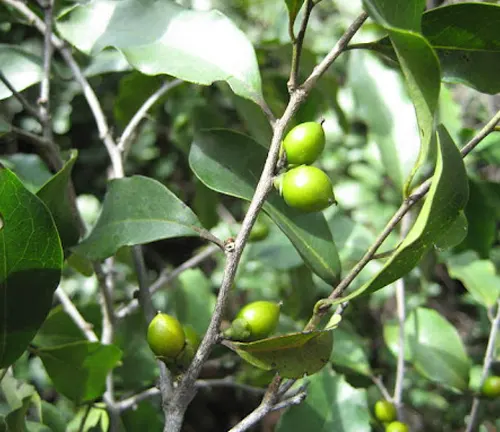
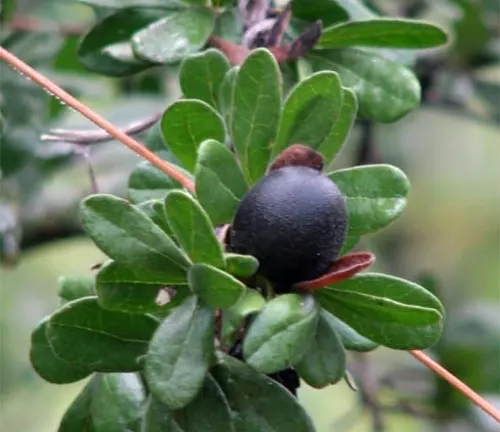
Diospyros Texana (Texas persimmon)
Gabon Ebony, or Diospyros crassiflora, is a 10–15 meter tree with nearly black wood valued in fine woodworking. Found in West African rainforests, it shelters birds and insects, enhancing biodiversity.
Where Do African Ebony (Jackalberry) Trees Grow?
The Jackalberry Tree is native to sub-Saharan Africa, thriving across the savannas, woodlands, and river valleys of the continent. This tree can be found in regions spanning from Senegal and Ethiopia to South Africa, adapting to various soil types, from nutrient-rich river banks to more arid and sandy soils in savanna regions. It has an exceptional ability to withstand dry climates, stabilizing soil and providing essential shade and shelter in the open landscape.
In its environment, the Jackalberry Tree plays an ecological role as a soil stabilizer and provider of habitats for numerous species. Its roots prevent soil erosion, and its large canopy creates a cooler microenvironment, which can be crucial in maintaining local temperature balances and providing shelter for animals.
How to Grow and Care for the African Ebony (Jackalberry) Tree
Growing a Jackalberry Tree can be rewarding due to its hardy nature and ecological contributions. Here’s how to cultivate this tree effectively:
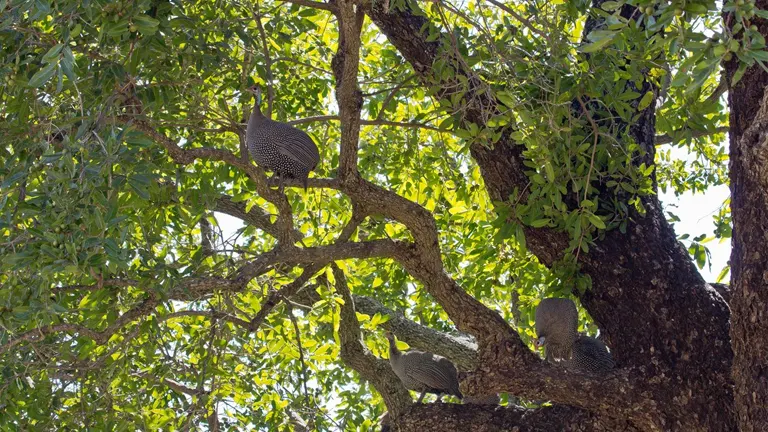
- Soil Requirements: The African Ebony Tree grows best in well-draining soil, though it tolerates nutrient-poor conditions.
- Water Needs: Once established, this tree is highly drought-tolerant. Water sparingly during dry periods to encourage deep root growth.
- Sunlight: Full sunlight is ideal for its growth, although it can survive in partially shaded areas.
- Propagation: The Jackalberry Tree can be grown from seeds or cuttings. When planting seeds, soak them in water for a day before sowing to improve germination.
Maintaining healthy Jackalberry Trees involves occasional pruning to remove dead branches and prevent pest infestations. While this species is generally pest-resistant, occasional monitoring for common pests will ensure it remains healthy.
Ecological Benefits of the African Ebony (Jackalberry) Tree
The African Ebony Tree has a significant positive impact on its environment:

- Soil Improvement: Its roots enrich the soil by breaking down compact earth, making it easier for other plants to grow nearby.
- Erosion Control: The tree’s extensive root system stabilizes soil, reducing erosion, particularly in areas prone to heavy rains.
- Supporting Biodiversity: The tree provides a habitat and food for numerous animals, including monkeys, birds, and insects, making it essential for ecosystem diversity.
African Ebony (Jackalberry) Tree Flowering and Pollination
The Jackalberry Tree blooms in the late spring, producing small, pale-yellow flowers that are aromatic and attract pollinators, especially bees. This pollination supports local insect populations and enhances crop yield in surrounding areas, reinforcing the Jackalberry Tree’s ecological value.
Is the African Ebony (Jackalberry) Tree Drought-Tolerant?
Yes, the Jackalberry Tree is remarkably drought-tolerant. It has evolved to survive in arid and semi-arid conditions, with a water-conserving leaf structure and an extensive root system capable of reaching deep water sources. For those growing this tree in regions with limited water, deep watering during the dry season can help sustain it while keeping the tree resilient.
African Ebony (Jackalberry) Tree and Wildlife Interactions
The Jackalberry Tree is integral to its ecosystem, providing a food source for a variety of animals. Its fruit is consumed by elephants, baboons, and antelope, while smaller animals seek shelter in its dense foliage. Birds often nest in its branches, and certain species, like the African hoopoe, are attracted to the tree’s shade and abundance of insects. The tree’s flowers and fruits sustain these animals, which, in turn, help disperse its seeds, contributing to the Jackalberry Tree’s growth and spread.
Final Conclusions
The African Ebony (Jackalberry) Tree is far more than just a tree; it is a lifeline for African landscapes, offering essential services such as soil enrichment, erosion prevention, and biodiversity support. Its role in conserving natural habitats, supporting wildlife, and offering resources for humans makes it an invaluable species in ecological conservation and sustainable forestry efforts.
Protecting and preserving the Jackalberry Tree ensures the continued health and stability of African ecosystems, underscoring its enduring importance for both nature and society.
Frequently Asked Questions (FAQs)
- What is the African Ebony (Jackalberry) Tree?
The African Ebony Tree, or Jackalberry, is a tall African tree known for its dark wood, edible fruit, and ecological benefits. - Where is the African Ebony (Jackalberry) Tree found?
It grows in sub-Saharan Africa, thriving in savannas, riverbanks, and tropical forests. - What is the scientific name of the African Ebony (Jackalberry) Tree?
Its scientific name is Diospyros mespiliformis. - Why is the Jackalberry Tree important to the ecosystem?
It stabilizes soil, improves soil health, and provides food and shelter for wildlife. - How does the Jackalberry Tree benefit wildlife?
Its fruit and leaves feed animals, while its canopy offers shelter to birds and insects. - Is the African Ebony (Jackalberry) Tree drought-tolerant?
Yes, it is highly drought-tolerant, adapted to survive in dry climates. - What is the wood of the Jackalberry Tree used for?
The tree’s dark wood is valued for furniture and traditional carvings. - Can you grow the Jackalberry Tree at home?
It’s possible in tropical or subtropical regions; it needs well-draining soil, sunlight, and occasional watering.
We hope this guide offered helpful insights into the importance of the African Ebony (Jackalberry) Tree. Have experiences or thoughts on its conservation? Share below to inspire others, and pass this guide along to those passionate about protecting our natural ecosystems!


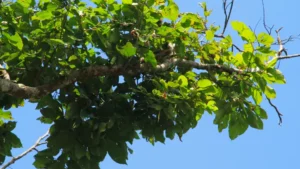
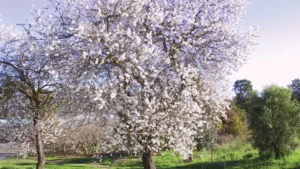
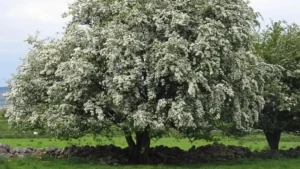
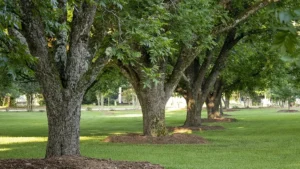
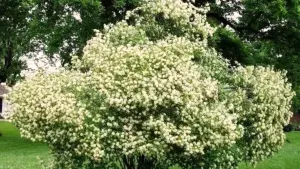
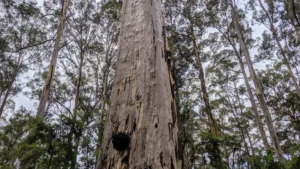
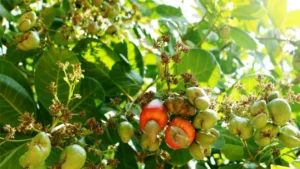
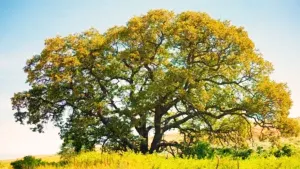
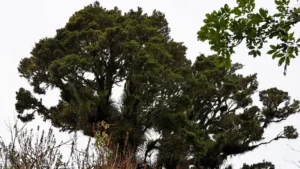
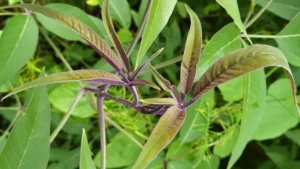
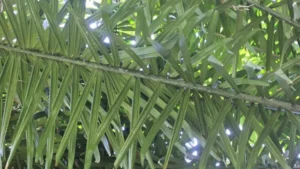
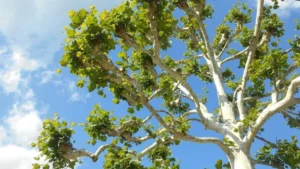
Leave your comment